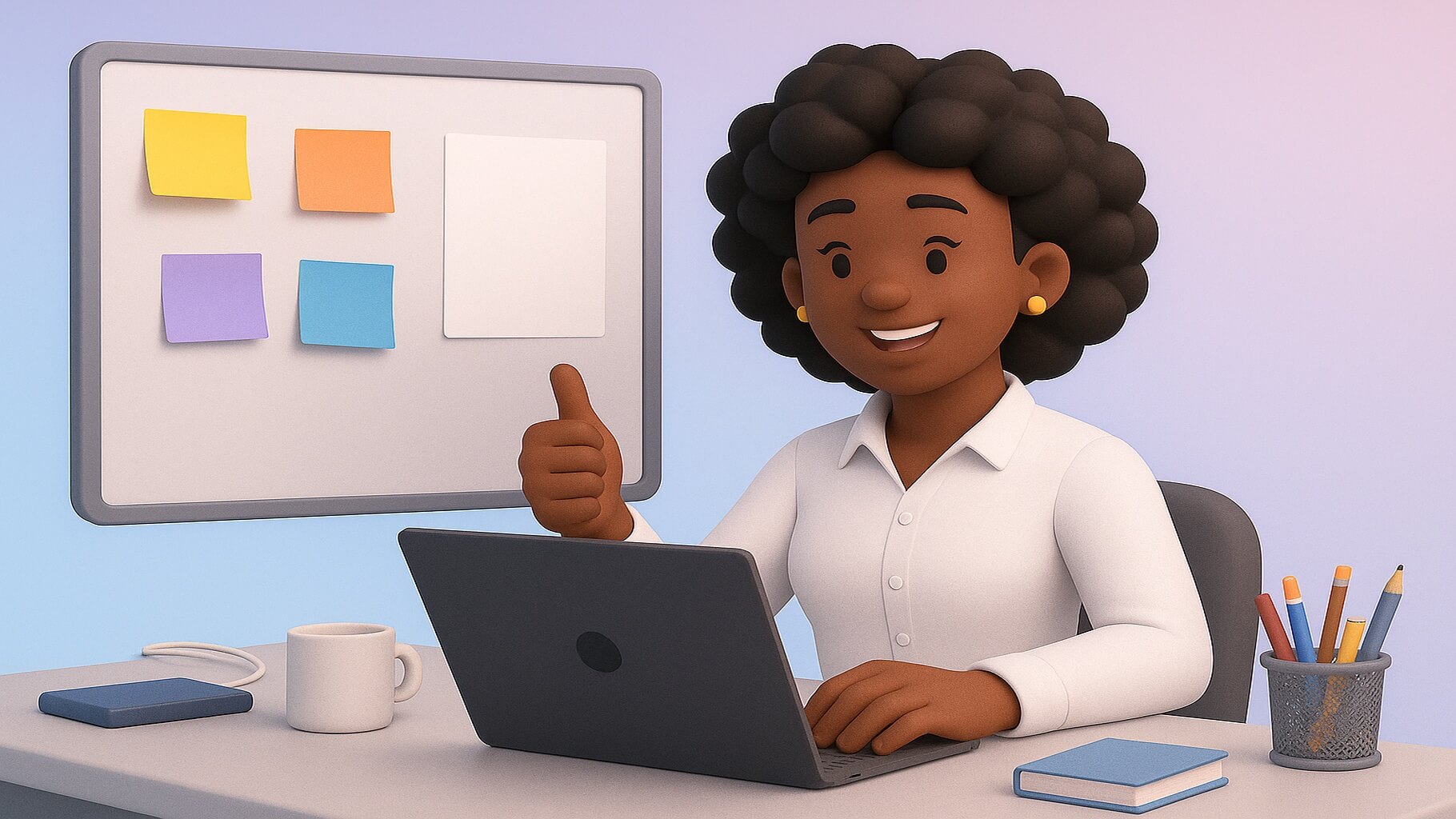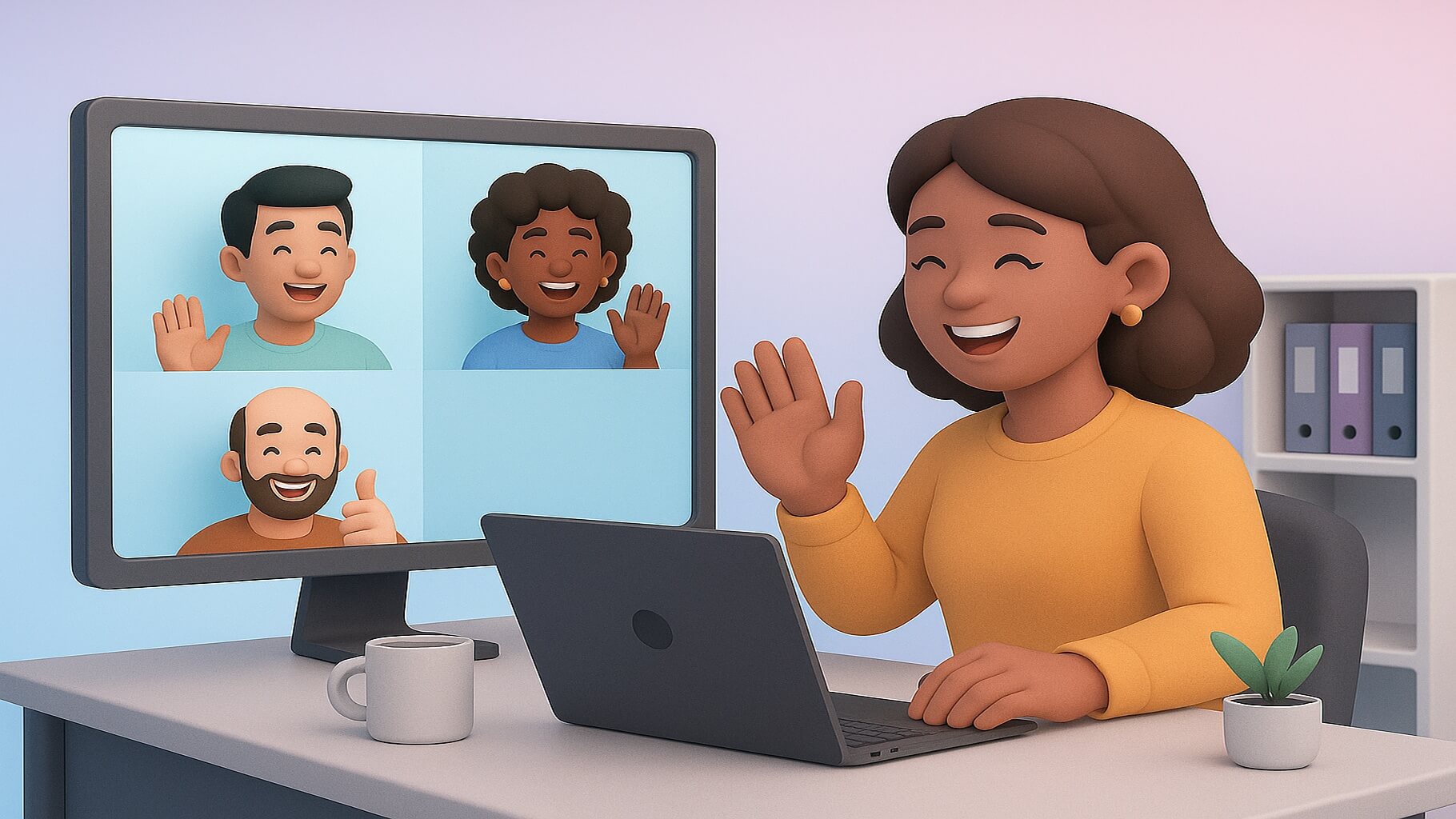
Creating a vibrant and engaged workplace requires more than standard policies and procedures. At Matter, we recognize that organizations today face growing pressure to enhance employee engagement, promote well-being, and cultivate a positive workplace culture. Office challenges have emerged as powerful tools to address these needs, offering structured yet enjoyable ways to enhance teamwork, promote healthy habits, and create memorable experiences that strengthen company culture.
Office challenges transform everyday work routines into opportunities for growth, connection, and fun. Whether you're looking to improve physical health, boost mental well-being, or simply inject more energy into your workplace, the right challenge can make a significant difference. If you want to motivate your staff, improve company culture, and make a long-term impact, this guide has more than sixty-three office challenge ideas for you to consider.
What are office challenges, and why implement them?

Office challenges are structured activities or competitions designed to engage employees in achieving specific goals while fostering team building and improving workplace culture. These initiatives range from fitness challenges that promote physical health to creative competitions that spark innovation and collaboration. Unlike mandatory workplace programs, office challenges leverage friendly competition and voluntary participation to create positive change, making them particularly effective at boosting morale and encouraging employees to develop healthy habits.
The rising popularity of workplace challenges reflects a growing understanding of their impact on employee engagement and well-being. Organizations that implement regular challenge programs report improved job satisfaction, stronger team bonds, and an enhanced overall workplace culture. By providing structured opportunities for employees to connect outside their usual work tasks, these challenges create shared experiences that build lasting relationships and contribute to a more positive work environment.
Understanding the impact of challenges in the workplace
Office challenges create measurable improvements in both individual and organizational performance. When employees participate in wellness challenges or team-based activities, they develop stronger connections with co-workers while simultaneously improving their physical and mental health. Active challenge programs are associated with better retention rates and more productivity, according to the research.
The psychological benefits extend beyond immediate participation. When you push your employees to do things they've never done before, they usually end up with greater proficiency in all areas. Improved performance in routine work tasks is a direct result of this confidence boost. Additionally, the social aspects of group challenges foster a sense of belonging that enhances team spirit and creates a more supportive office environment.
Key benefits of implementing workplace challenges include:
- Increased employee motivation and energy levels
- Stronger interpersonal relationships among team members
- Improved physical fitness and mental well-being
- Enhanced problem-solving and creative thinking skills
- Greater alignment with company values and culture
How do office challenges differ from traditional team building?
Traditional team-building activities often involve one-time events or external facilitators, while office challenges integrate seamlessly into daily routines and work hours. This integration makes participation more accessible and sustainable, allowing employees to engage without significant disruption to their productivity. Office fitness challenges, for example, can incorporate walking meetings or desk-based exercises that fit naturally into the workday.
The ongoing nature of workplace wellness challenges creates momentum that single events cannot achieve. When teams participate in month-long wellness activities or quarterly skill development competitions, they establish habits and relationships that endure long after the challenge concludes. This sustained engagement leads to more profound cultural changes and longer-lasting improvements in workplace dynamics.
Modern office challenges also offer greater flexibility and inclusivity. Unlike traditional activities that might favor certain personality types or physical abilities, well-designed challenges provide multiple ways to participate and succeed. This approach ensures that all employees, including remote team members and those with different abilities, can contribute meaningfully to team goals.
The ROI of implementing workforce challenges
Investing in office challenges delivers tangible returns through reduced healthcare costs, decreased absenteeism, and improved employee retention. Organizations tracking the impact of wellness challenges report that 72% of companies see reduced healthcare costs after implementation, with the average return on investment for employee wellness programs reaching 6:1. A comprehensive study by the U.S. Chamber of Commerce found that employer-sponsored health and wellness programs yield a 47% average ROI, meaning employers receive $1.47 back for every dollar invested in workforce health initiatives.
Beyond direct cost savings, challenges contribute to enhanced productivity and innovation. Companies implementing wellness programs have observed a 66% increase in overall productivity. When compared to their non-participating counterparts, 70% of employees who participate in these programs report greater levels of job satisfaction. The financial impact extends to reduced absenteeism, with organizations saving $5.82 for every dollar spent on wellness programs due to lower absenteeism costs. Participation in these initiatives can decrease sick days by up to 16%, creating significant operational improvements alongside the health benefits.
17 office wellness challenges for healthier teams

Establishing a health culture in the workplace requires careful planning and offering a range of activities to accommodate different interests and fitness levels. Employee wellness challenges provide designed programs to help workers improve their mental and physical health and develop stronger relationships with their coworkers These programs demonstrate organizational commitment to employee well-being and create lasting positive changes in workplace culture.
The most successful wellness challenge programs offer variety and flexibility, allowing participants to choose activities that align with their personal goals and capabilities. By incorporating both individual and team-based challenges, organizations can foster healthy competition while ensuring everyone feels included and valued. Below are 17 proven wellness challenges that enhance teamwork while promoting better physical and mental health outcomes.
17 wellness challenge ideas for your office:
- Hydration station challenge - Track daily water intake with fun team goals
- Mindfulness minutes - Daily meditation or breathing exercises with group sessions
- Healthy recipe exchange - Share and try nutritious recipes from team members
- Sleep quality quest - Focus on improving sleep habits with weekly check-ins
- Desk-ercise challenge - Perform desk-based stretches and exercises throughout the day
- Gratitude challenge - Share daily appreciations to boost mental well-being
- Walking meetings initiative - Replace traditional meetings with outdoor walks
- Nutrition tracking challenge - Monitor healthy eating choices as teams
- Stress-less September - Monthly focus on stress relief techniques
- Active commute challenge - Encourage walking, biking, or public transit use
- Wellness Wednesday workshops - Weekly educational sessions on health topics
- Digital detox challenge - Scheduled breaks from screens and devices
- Posture perfect challenge - Improve ergonomics and body alignment
- Healthy snack swap - Replace office junk food with nutritious alternatives
- Mental health check-ins - Regular team discussions about well-being
- Flexibility challenge - Daily stretching routines to improve mobility
Physical health office wellness challenges
Physical health initiatives form the foundation of many successful workplace wellness programs. These challenges address the sedentary nature of office work by encouraging regular movement and physical activity throughout the day. By making fitness accessible and enjoyable, organizations help employees develop sustainable habits that improve cardiovascular health and overall physical fitness.
Effective physical challenges accommodate a range of fitness levels and abilities. Step challenges remain popular because they're inclusive and easy to track, while more intensive options, such as stair-climbing competitions, appeal to those seeking greater physical demands. The process of inviting team members with diverse abilities ensures that everyone can contribute meaningfully to the group's goals.
Creating accountability through team-based challenges enhances participation and results. When co-workers support each other's fitness goals, they build stronger relationships while improving their health. This peer support system often proves more motivating than individual efforts, leading to higher completion rates and better long-term habit formation. Programs focused on heart health through cardiovascular activities show particular success in preventing chronic diseases.
Mental health and stress-reduction challenges
Mental health challenges address the growing recognition that employee well-being extends beyond physical fitness. These initiatives offer structured approaches to managing stress, enhancing emotional resilience, and promoting more effective mental health practices. By normalizing conversations about mental well-being, organizations create more supportive environments where employees feel comfortable seeking help when needed.
Successful mental health challenges combine education with practical application. Workshops on techniques to relieve stress paired with daily practice sessions help employees develop coping skills they can use long-term. Gratitude challenges and mindfulness programs offer simple yet effective tools for improving mental well-being, requiring minimal time investment.
The social component of mental health challenges helps reduce stigma and build community. When teams openly discuss their stress relief strategies or share gratitude practices, they create psychological safety that benefits everyone. This candor contributes to a positive work atmosphere that values both physical and mental health. Including family members in certain wellness initiatives can extend support systems beyond the workplace, providing a more comprehensive approach to overall well-being.
Nutrition-based challenges for office workers
Nutrition challenges address the unique dietary needs of office workers, from the temptations of vending machines to the pressures of rushed lunch breaks. These programs educate employees about healthy eating while providing practical strategies for maintaining good nutrition during work hours. By focusing on sustainable changes rather than restrictive diets, nutrition challenges promote long-term improvements in health.
Successful nutrition initiatives often involve the entire office environment. Healthy snack swaps in break rooms, tracking water consumption, and team lunch challenges create supportive environments that foster better eating habits. When healthy choices become the easy choices, employees are more likely to maintain improved nutrition practices. Adding a fun twist to nutrition tracking through gamification increases engagement.
Sharing and community play crucial roles in the success of the nutrition challenge. Recipe exchanges, cooking demonstrations, and group meal planning sessions transform healthy eating from a solitary struggle into a collaborative adventure. This social aspect makes nutrition changes more enjoyable and sustainable while building stronger team bonds. Collaborating with local organizations to source healthy catering options can enhance the authenticity of the program.
17 office fitness challenges to boost energy

Physical fitness in the workplace has a direct impact on productivity, creativity, and overall job satisfaction. Office fitness challenges offer structured opportunities for employees to incorporate movement into their workdays, mitigating the adverse consequences of prolonged sitting and sedentary behavior. These challenges not only improve physical health but also enhance mental clarity and energy levels throughout the day.
Modern fitness challenges recognize that not everyone has the same physical capabilities or interests. By offering diverse options that range from simple step challenges to more complex team-based activities, organizations ensure that all employees can participate meaningfully. The following 17 fitness challenge ideas are designed to accommodate various fitness levels while fostering team bonding and healthy competition.
17 energizing fitness challenge ideas:
- Plank challenge progressive - Build core strength with increasing hold times
- Stairway to success - Track flights of stairs climbed daily
- Chair yoga sessions - Gentle stretching routines perfect for office environments
- Push-up progress challenge - Gradual increase in daily push-up counts
- Walking meeting milestone - Convert traditional meetings to walking discussions
- Lunchtime fitness classes - Group exercise sessions during lunch break
- Desk cycle challenge - Use under-desk bikes to track miles
- Monthly mileage challenge - Track total distance through various activities
- Office Olympics - Multi-event fitness competition with fun activities
- Dance break challenge - Scheduled movement breaks with music
- Flexibility Friday - Weekly stretching and mobility sessions
- Wall sit warriors - Build leg strength with timed wall sits
- Active break bingo - Complete various movement activities throughout the day
- Team sports tournament - Organize friendly competitions in various sports
- Morning energizer routine - Start each day with group exercises
- Weekend warrior challenge - Encourage active weekends with photo sharing
- Hydration station challenge - Track daily water intake with team goals
Office step challenge ideas and tracking
Step challenges remain one of the most popular and accessible fitness initiatives in workplace settings. These challenges work well because they require minimal equipment, accommodate all fitness levels, and integrate seamlessly into daily routines. Modern tracking technology, made possible by smartphones and wearables, makes monitoring progress simple and engaging for participants.
Successful step challenges incorporate both individual and team elements to maximize engagement and motivation. While personal goals motivate individual improvement, team-based competitions foster collaboration and mutual support. Creating leaderboards, milestone celebrations, and progress visualizations helps maintain momentum throughout the challenge period. The winning team often receives recognition beyond prizes, gaining respect and admiration from peers.
Key strategies for effective step challenges include:
- Setting realistic daily and weekly targets based on baseline activity levels
- Creating themed weeks or special events to maintain interest
- Offering multiple ways to earn steps beyond walking
- Recognizing improvement percentages alongside absolute numbers
- Providing resources for safe and effective walking techniques
Desk-based office fitness challenge ideas
Desk-based fitness challenges address the reality that many employees spend most of their work hours seated. These office exercise challenges concentrate on exercises and movements that can be executed in a restricted space without the need for specialized equipment. By normalizing movement during the workday, organizations help employees counteract the negative health effects of prolonged sitting.
Effective desk exercises target common problem areas, such as neck tension, back pain, and poor posture. Challenges might include hourly stretch reminders, desk yoga sequences, or isometric exercises that build muscle tone without leaving the workstation. The key is making these activities quick, quiet, and professional enough for office environments. Having one team member demonstrate proper form can encourage wider participation.
Creating visual reminders and resources supports participation in desk-based challenges. Posters demonstrating proper form, email reminders with exercise suggestions, and team check-ins help maintain engagement. When employees see colleagues participating, it normalizes movement and encourages broader adoption of healthy habits. These exercises are particularly beneficial for individual employees who may feel self-conscious about participating in more public fitness activities.
Group fitness challenges in the workplace
Group fitness challenges leverage social dynamics to enhance motivation and accountability. These initiatives bring employees together for shared physical activities, creating bonds that extend beyond exercise into improved working relationships. The collective energy of group participation often motivates individuals to achieve more than they would on their own, thereby enhancing teamwork across departments.
Successful team workout challenges offer variety to maintain interest and accommodate different preferences. Options might include team sports tournaments, group fitness classes, or collaborative goals, such as collective mileage targets. The social aspect transforms exercise from a chore into an enjoyable team activity that employees actively anticipate. Inject some fun into the proceedings with activities like obstacle courses or relay races.
Important things to keep in mind when organizing group fitness contests are:
- Scheduling sessions at times that work for most participants
- Offering multiple difficulty levels within the same activity
- Rotating leadership roles to increase engagement
- Celebrating team achievements alongside individual progress
- Creating inclusive activities that welcome all fitness levels
11 fun office challenges for team bonding

Fun office challenges inject energy and excitement into the workplace while strengthening relationships among team members. These activities extend beyond traditional work tasks to create shared experiences that foster trust, enhance communication, and cultivate a positive workplace culture. When employees engage in enjoyable challenges together, they develop deeper connections that enhance collaboration in their regular work.
The most effective fun challenges strike a balance between entertainment and meaningful outcomes. While the primary purpose is enjoyment, these activities also help to develop important abilities like creativity, problem-solving, and teamwork. By carefully selecting challenges that align with organizational values and team dynamics, companies create experiences that are both memorable and beneficial for professional development.
11 engaging, fun challenge ideas:
- Photo scavenger hunt - Teams capture creative images around the office
- Talent show challenge - Showcase hidden skills and hobbies
- Desk decoration contest - Themed competitions for workspace creativity
- Book club challenge - Monthly reading challenge with group discussions
- Puzzle race challenge - Teams compete to complete puzzles fastest
- Random acts of kindness - Daily challenges to spread positivity
- Office bake-off - Culinary competition with taste-testing sessions
- Improv workshop challenge - Build communication skills through comedy
- Paper airplane engineering - Design and flight Competition
- Escape room challenge - Problem-solving adventures for team bonding
Creative fun office challenges for all personalities
Creative challenges offer outlets for self-expression, accommodating diverse personality types and comfort levels. These activities recognize that fun means different things to different people, offering options for both extroverts who enjoy performance and introverts who prefer behind-the-scenes contributions. This inclusivity ensures everyone can participate authentically.
Successful creative challenges often involve collaborative elements, where individual strengths combine to achieve team success. Art projects, storytelling competitions, and innovation challenges allow employees to contribute their unique perspectives while working toward shared goals. This approach celebrates diversity while building unity within teams. Including local organizations as judges or beneficiaries of creative projects adds community connection.
Implementation strategies for creative challenges include:
- Providing clear guidelines while allowing creative freedom
- Offering multiple participation options within each challenge
- Celebrating process and effort alongside final results
- Creating safe spaces for creative risk-taking
- Documenting and sharing creative outputs to inspire others
Quick daily office games to play
Daily games offer brief yet meaningful breaks from work tasks, allowing employees to recharge and refocus. These quick activities, typically lasting five to fifteen minutes, offer mental refreshment without significantly disrupting productivity. Regular participation in daily games creates anticipated moments of fun that enhance the overall workplace atmosphere.
Effective daily games require minimal setup and explanation, allowing for spontaneous participation. Options might include word games, quick trivia rounds, or simple physical challenges that energize participants. The key is variety and accessibility, ensuring games remain fresh and inclusive for all team members. Adding a fun twist to traditional games keeps them engaging and enjoyable.
Popular daily game formats that encourage participation:
- Morning brain teasers to start the day
- Lunchtime quick challenges for midday energy
- End-of-day wind-down activities
- Virtual options for remote team members
- Rotating game leadership among employees
Monthly fun office challenges that build culture
Monthly challenges offer extended engagement opportunities that facilitate deeper skill development and relationship building. These longer-format challenges create anticipation and sustained interest while providing flexibility for busy schedules. By aligning monthly themes with company values or seasonal events, organizations can reinforce their culture while maintaining employee engagement.
Successful monthly challenges often involve progressive elements where participants build upon previous achievements. Reading challenges, fitness goals, or creative projects that evolve create narrative arcs that maintain interest. Regular check-ins and milestone celebrations help maintain momentum throughout the month.
The extended timeframe of monthly challenges allows for meaningful culture building. As employees work toward shared goals over several weeks, they develop habits and relationships that persist beyond the challenge period. This sustained engagement creates lasting positive changes in workplace dynamics and employee satisfaction.
10 workplace challenges and solutions for productivity

Productivity challenges in modern offices stem from various sources, including digital distractions, inefficient processes, and communication barriers. Addressing these workplace challenges requires a systematic approach that combines individual skill development with organizational support. By implementing targeted solutions, companies can help employees overcome common obstacles while maintaining a positive work environment.
The most effective productivity initiatives recognize that different employees face different challenges. While some struggle with time management, others may need help with focus or collaboration. Offering diverse challenge options ensures everyone can address their specific productivity barriers while contributing to overall team improvement. The following challenges and solutions provide frameworks for enhancing workplace efficiency.
10 productivity challenges with proven solutions:
- Focus hour implementation - Designate distraction-free work periods daily
- Meeting efficiency challenge - Reduce meeting times while improving outcomes
- Digital declutter week - Organize digital files and streamline workflows
- Priority matrix challenge - Master task prioritization using proven frameworks
- Pomodoro technique trial - Test time-boxing methods for improved focus
- Communication clarity challenge - Improve written and verbal communication
- Deadline achievement rate - Track and improve on-time task completion
- Deep work sessions - Schedule uninterrupted time for complex tasks
- Process Improvement Sprint - Identify and eliminate workflow inefficiencies
- Workspace optimization challenge - Organize physical and digital workspaces for maximum efficiency
Time management challenges in the workplace
Time management represents one of the most common productivity challenges facing modern workers. With constant interruptions, competing priorities, and endless task lists, many employees struggle to use their time effectively. Structured challenges help participants develop better habits and systems for managing their workday efficiently.
Effective time management challenges focus on sustainable behavior change rather than temporary fixes. Teaching employees to identify their peak productivity hours, batch similar tasks, and protect focused work time creates lasting improvements. These skills benefit both individual performance and team collaboration by establishing clearer boundaries and setting more specific expectations.
Essential components of time management challenges:
- Baseline assessments to identify current time usage patterns
- Introduction of proven time management techniques
- Regular check-ins to discuss progress and obstacles
- Peer learning opportunities to share successful strategies
- Tools and resources for continued improvement
Focus and concentration challenges
Digital distractions and open office environments create significant challenges for maintaining focus during work hours. Concentration challenges help employees develop strategies for deep work while managing necessary interruptions. By practicing focus techniques in structured settings, participants build mental stamina for sustained attention.
Successful focus challenges combine environmental modifications with personal discipline techniques. Creating designated quiet zones, implementing notification management protocols, and practicing mindfulness exercises all contribute to improved concentration. Team participation normalizes these practices and creates mutual support for maintaining focus.
Technology plays a dual role in addressing challenges, serving as both an obstacle and a solution. While digital distractions pose problems, apps and tools that block distracting websites or track focus time can support efforts to improve. The key is teaching employees to use technology intentionally rather than reactively.
Collaboration challenges and their solutions
Effective collaboration requires clear communication, aligned goals, and mutual respect among team members. Employee engagement challenges often stem from unclear roles, poor information sharing, and conflicting work styles. By practicing collaboration skills in structured challenges, teams develop better working relationships and more efficient processes.
Cross-functional challenges prove particularly valuable for improving collaboration. When employees from many departments work together on difficult assignments, they learn to appreciate different points of view and develop efficient communication skills that can be applied to everyday work initiatives. This enhanced understanding reduces friction and improves project outcomes.
Key strategies for collaboration challenges include:
- Establishing clear communication protocols and preferences
- Practicing active listening and feedback techniques
- Developing shared vocabulary and understanding
- Creating opportunities for informal relationship building
- Celebrating collaborative successes to reinforce positive behaviors
33 office games to play during breaks

Strategic break activities help employees recharge mentally and physically, leading to improved focus and creativity when returning to work tasks. Office games during breaks provide structured relaxation opportunities that prevent burnout while fostering social connections. These activities transform necessary rest periods into enjoyable experiences that enhance overall workplace culture.
The greatest break-time games require minimum setup and can handle a large number of participants. They should provide mental stimulation without creating stress, offering genuine refreshment from work tasks. By rotating different types of games, organizations maintain interest while addressing different preferences and energy levels throughout the day.
8 refreshing break-time games:
- Office pictionary - Drawing game using work-related themes
- Speed networking - Rapid-fire conversations with colleagues
- Minute to win it challenges - Quick competitive tasks with office supplies
- Story building - Collaborative storytelling, one sentence at a time
- Desk chair racing - Safe and fun physical activity
- Name that tune - Musical guessing game for all ages
- Word association lightning round - Fast-paced verbal creativity
- Two truths and a lie - Quick icebreaker for team bonding
Five-minute office games to play
Five-minute games provide quick mental breaks without significantly disrupting workflow. These brief activities offer just enough distraction to reset focus while maintaining productivity momentum. The short duration makes them accessible even during busy periods, ensuring consistent participation opportunities.
Effective five-minute games require simple rules and immediate engagement. Options like quick trivia, word puzzles, or simple physical challenges work well because they don't require extensive explanation or setup. The key is creating variety while maintaining simplicity, ensuring games remain fresh and engaging over time.
Popular five-minute game formats that boost energy:
- Daily riddles or brain teasers are posted in common areas
- Quick stretching or movement challenges
- Rapid-fire question rounds about colleagues
- Simple guessing games using office items
- Brief mindfulness or breathing exercises
Team-based games for office spaces
Team games during breaks not only strengthen relationships but also provide enjoyable diversions from work. These activities leverage collaborative dynamics to create shared experiences that build trust and improve communication. Organizations that rotate team compositions enable employees to engage with colleagues with whom they may not interact on a daily basis.
Physical space considerations influence game selection for office environments. Activities should work within available areas without disrupting others or requiring extensive setup. Creative use of conference rooms, break areas, or outdoor spaces expands possibilities while respecting workplace constraints.
Successful team games strike a balance between competition and collaboration, ensuring that everyone enjoys participation regardless of the outcome. Mixing physical and mental challenges accommodates different strengths, while rotating leadership roles provides everyone with opportunities to lead activities. This inclusive approach maximizes engagement and team-building benefits.
10 Team-Based Games for Office Spaces
- Office Olympics - Multi-event competition with paper airplane contests, chair races, and rubber band archery
- Human knot - Teams stand in circles, grab random hands, and work together to untangle without letting go
- Marshmallow tower challenge - Build the tallest structure using spaghetti, tape, and marshmallows
- Minute to win it relay - Quick challenges using office supplies like stacking cups or moving paperclips
- Conference room charades - Act out work-related terms, movie titles, or company values
- Puzzle race competition - Teams compete to complete jigsaw puzzles or brain teasers fastest
- Office trivia bowl - Questions about company history, colleagues' fun facts, and general knowledge
- Paper tower engineering - Build the highest tower using only paper and tape in 10 minutes
- Blind drawing challenge - One teammate describes an image while others draw without seeing it
- Scavenger hunt relay - Teams race to find specific items or complete tasks around the office
These games promote teamwork, communication, and friendly competition, making them suitable for typical office environments. They require minimum equipment and may be tailored to different group sizes and physical abilities.
Virtual games for hybrid offices
Hybrid work environments require games that seamlessly include both in-office and remote team members. Virtual team challenges ensure everyone can participate equally, preventing remote workers from feeling excluded from team-building activities. Technology enables creative solutions that maintain engagement across physical distances.
Effective virtual games leverage familiar platforms while introducing novel activities. Video conferencing tools support visual games, collaborative documents enable word games, and specialized apps create immersive experiences. The key is selecting games that work well with available technology while remaining accessible to all skill levels.
Integration strategies for virtual games include:
- Testing technology before game sessions
- Providing clear instructions for remote participation
- Ensuring equal speaking opportunities for all players
- Recording sessions for asynchronous participation options
- Creating hybrid-specific games that leverage both environments
15 Virtual Games for Hybrid Offices
- Virtual escape room - Teams solve digital puzzles together using screen sharing and breakout rooms
- Online trivia competition - Host themed trivia using platforms like Kahoot or custom questions about company culture
- Digital scavenger hunt - Participants find items in their workspace or complete photo challenges
- Two truths and a lie - Classic icebreaker adapted for video calls with polling features
- Virtual pictionary - Use digital whiteboards for drawing while teams guess over video
- Remote bingo - Create custom bingo cards with work-from-home scenarios or team traits
- Online murder mystery - Role-play detective games designed for virtual participation
- Collaborative playlist challenge - Teams create themed Spotify playlists and vote on favorites
- Virtual coffee roulette - Random pairing of employees for 15-minute casual video chats
- Digital charades - Act out words or phrases on camera while teams guess
- Online board games - Use platforms like Board Game Arena or Tabletopia for classic games
- Virtual show and tell - Employees share interesting objects or hobbies from their workspace
- Remote team jeopardy - Create custom categories mixing work topics with fun facts
- GIF wars - Teams compete to find the most relevant or funniest GIFs for given scenarios
- Virtual background challenge - Creative competition for best themed or custom video backgrounds
These games ensure equal participation whether employees are in the office or working remotely, fostering connection and engagement across the entire hybrid workforce.
How to overcome common challenges in the workplace
Successfully implementing office challenges requires thoughtful planning and proactive problem-solving. Organizations must anticipate potential obstacles and develop strategies to ensure broad participation and sustained engagement. By addressing common barriers upfront, companies create inclusive programs that benefit all employees while achieving desired outcomes.
The most successful challenge programs evolve based on participant feedback and changing organizational needs. Regular assessment and adjustment ensure that challenges remain relevant and engaging while addressing emerging employee needs. This adaptive approach demonstrates organizational commitment to employee well-being and continuous improvement.
Addressing participation barriers
Low participation often stems from time constraints, skepticism about benefits, or fear of judgment. Addressing these barriers requires multi-faceted approaches that make participation attractive and accessible. Clear communication about time commitments, flexible participation options, and emphasis on fun over competition help overcome initial resistance.
Creating psychological safety proves essential for encouraging participation. When employees trust that challenges support rather than evaluate them, they're more likely to engage authentically. Leaders who model participation and share their struggles humanize challenges, reducing performance anxiety.
Strategies for increasing participation include:
- Offering multiple difficulty levels within each challenge
- Providing flexible scheduling options
- Celebrating participation alongside achievement
- Creating opt-in rather than mandatory programs
- Sharing success stories from previous participants
Solutions for diverse workforce challenges
Modern workforces include employees with varying physical abilities, cultural backgrounds, and personal circumstances. Inclusive challenge design ensures everyone can participate meaningfully regardless of individual differences. This requires thoughtful planning and a willingness to adapt traditional activities for broader accessibility.
Cultural sensitivity in challenge design respects diverse perspectives on competition, physical activity, and social interaction. Offering varied challenge types ensures options align with different cultural values and personal preferences. Regular feedback collection helps identify unintentional barriers and guides program improvements.
Technology solutions support inclusive participation by providing multiple channels for engagement. Apps with accessibility features, multilingual resources, and asynchronous participation options help overcome traditional barriers to learning. The key is maintaining human connection while leveraging technology for greater inclusion.
Measuring success in office challenges
Effective measurement goes beyond participation rates to assess actual impact on employee well-being and organizational goals. Combining quantitative metrics with qualitative feedback provides a comprehensive understanding of challenge effectiveness. This data guides program refinement and demonstrates ROI to stakeholders.
Key performance indicators for office challenges vary based on program goals but often include engagement rates, improvements in health metrics, and employee satisfaction scores. Regular pulse surveys capture participant experiences while tracking systems monitor objective outcomes. This balanced approach ensures accurate assessment of the challenge impact.
Meaningful metrics for workplace challenges:
- Participation rates across different demographics
- Self-reported improvements in target areas
- Team cohesion and communication assessments
- Productivity and performance indicators
- Long-term behavior change sustainability
How Matter elevates office challenges
Team building challenges reach new heights when supported by Matter's innovative recognition platform. The seamless integration with Slack and Microsoft Teams makes participation effortless, while its beautiful kudos cards add visual appeal to peer recognition. By combining challenge tracking with meaningful appreciation, Matter helps organizations create comprehensive wellness and engagement programs.
The platform's unique approach to rewards, facilitated through its coin system, encourages authentic participation without creating unsustainable competition. Coins reset weekly, ensuring fresh opportunities for recognition while preventing hoarding behaviors. This design philosophy aligns perfectly with the office challenge goals of sustained engagement and genuine connection among team members.
Recognition features that support office wellness challenges
Matter's customizable kudos cards allow organizations to create specific recognition categories for challenge achievements. Whether celebrating fitness milestones, mental health initiatives, or team collaboration success, these visual acknowledgments make accomplishments memorable and shareable. The platform's analytics help track recognition patterns, revealing which challenges resonate most with employees.
Automated features, such as Feedback Friday, ensure consistent recognition throughout challenge periods. These regular prompts remind team members to acknowledge peers' efforts, maintaining momentum even during busy periods. The integration with existing communication tools means recognition happens naturally within established workflows.
Key Matter features that enhance challenges:
- Custom kudos categories aligned with specific challenge goals
- Real-time recognition is visible to entire teams
- Analytics dashboard for tracking engagement patterns
- Automated celebration of milestones and achievements
- Flexible reward options, including charitable donations
Tracking participation in fun office challenges
Matter's reporting capabilities provide valuable insights into challenge participation and engagement levels. Organizations can monitor individual and team progress while identifying trends that inform future program design and development. This data-driven approach ensures challenges continuously improve based on actual employee behavior and preferences.
The platform's social feed creates visibility for challenge participation, inspiring others through peer examples. When employees see colleagues receiving recognition for challenging achievements, it normalizes participation and encourages broader engagement. This viral effect amplifies the impact of fun team challenges beyond direct participants.
Visual progress tracking through Matter helps maintain motivation throughout longer challenges. Participants can track their progress toward goals while receiving encouragement from their teammates. This combination of individual tracking and social support creates optimal conditions for achieving success in challenges.
Building lasting habits through peer recognition
Matter's approach to peer recognition reinforces positive behaviors long after specific challenges end. When employees regularly acknowledge each other's healthy choices and collaborative efforts, these behaviors become embedded in workplace culture. The platform facilitates this cultural shift by making recognition easy, visible, and meaningful.
The weekly coin reset mechanism prevents recognition fatigue while encouraging consistent participation. This design ensures that employees actively seek out recognition opportunities, rather than treating appreciation as a one-time event. Over time, this regular practice of noticing and acknowledging positive behaviors creates lasting cultural change.
Sustained behavior change requires both individual motivation and social support. Matter provides the infrastructure for both elements, enabling employees to celebrate personal achievements while contributing to team success. This dual focus helps transform temporary challenge participation into permanent healthy habits.
FAQs about office challenges
Understanding common questions about office challenges helps organizations design and implement successful programs. These frequently asked questions address practical concerns while providing actionable guidance for creating engaging workplace initiatives. Clear answers to these questions enable better planning and higher participation rates.
Q: What are the most effective office fitness challenge ideas?
A: The most effective employee fitness challenges combine accessibility with measurable outcomes. Step challenges consistently rank highest in terms of participation because they require no special equipment and accommodate all fitness levels. Walking meetings provide dual benefits of physical activity and productive discussions. Desk-based exercises and stretching challenges work well for employees with limited time or mobility. The key is offering varied options that fit different schedules and abilities while maintaining clear tracking methods.
Q: How much do office wellness challenges cost?
A: Office wellness challenges can range from virtually free to several thousand dollars, depending on the scope and rewards. Basic challenges, such as using existing resources like step-tracking apps and peer recognition, cost minimal amounts.
Q: Best practices for inclusive office challenges
A: Inclusive office challenges prioritize participation over performance and offer multiple ways to succeed. Offer various difficulty levels within each challenge and enable employees to self-select their appropriate goals. Include both physical and mental activities to accommodate different abilities and interests. Ensure remote team challenges have equal participation opportunities through virtual options. Celebrate improvement percentages alongside absolute achievements to recognize individual progress. Create team-based elements that value diverse contributions and foster mutual support rather than competition.
Final thoughts on office challenges
Office challenges serve as powerful tools for transforming workplace culture, enhancing employee well-being, and fostering meaningful connections among team members. When intelligently developed and consistently implemented, these projects have significant ripple effects that extend far beyond immediate engagement. Organizations that invest in comprehensive challenge programs report improved employee engagement, reduced healthcare costs, and stronger team dynamics.
The key to successful office challenges lies in understanding that one size doesn't fit all. By offering diverse options that accommodate different interests, abilities, and work styles, organizations ensure broad participation and sustained engagement. Whether focusing on workplace fitness challenges, mental health, productivity, or team bonding, the most effective challenges align with company values while addressing genuine employee needs.
Creating sustainable challenge programs
Sustainability in office challenges requires more than initial enthusiasm. Successful programs build momentum through consistent communication, regular refreshers, and continuous evolution based on participant feedback. Organizations must view challenges as ongoing cultural initiatives, rather than temporary campaigns, and integrate them into broader employee engagement strategies.
Long-term success depends on leadership support and resource allocation. When executives actively participate in challenges and allocate necessary resources, it signals organizational commitment to employee well-being. This top-down support, combined with bottom-up enthusiasm, creates optimal conditions for sustainable programs.
Essential elements for sustainable challenge programs:
- Regular program evaluation and refinement based on data
- Integration with existing wellness and recognition initiatives
- Clear communication about program benefits and expectations
- Flexible frameworks that adapt to changing workforce needs
- Celebration of long-term participation and behavior change
The future of workplace challenges and solutions
Evolving workplace dynamics, including increased remote work and a focus on mental health, shape the future of office challenges. Technology will play an expanding role in facilitating inclusive participation while maintaining human connection. Artificial intelligence may personalize challenge recommendations based on individual needs and preferences.
Future challenges will likely emphasize holistic well-being over single-focus initiatives. Programs addressing financial wellness, career development, and work-life balance alongside traditional health metrics reflect a growing understanding of interconnected employee needs. This comprehensive approach ensures challenges remain relevant as workplace priorities evolve.
Organizations preparing for future workplace challenges should focus on building flexible frameworks that accommodate emerging trends. Investing in platforms that support various challenge types while providing robust analytics positions companies to adapt quickly to changing employee expectations and workplace realities.
Your next steps for office challenge success
Beginning your office challenge journey starts with assessing the current workplace culture and employee needs. Conduct surveys or focus groups to understand interests and barriers to participation. Start small with pilot programs that test different challenge types before scaling successful initiatives. This measured approach ensures programs align with organizational capacity and employee preferences.
Partner selection significantly impacts challenge success. Platforms like Matter offer comprehensive support for recognition-based challenges, integrating seamlessly with existing workplace tools. The right technology partner simplifies administration while enhancing participant experience through engaging features and meaningful rewards.
Ready to transform your workplace through engaging office challenges? Schedule a demo with a Matter expert today and discover how the right tools can help you recognize great work, boost engagement, and support long-term business success.
























